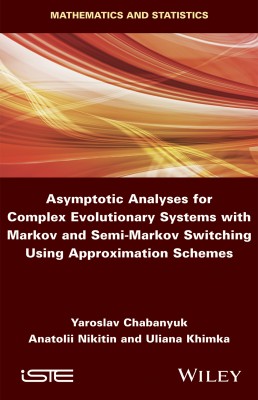
This book analyzes stochastic evolutionary models under the impulse of diffusion, as well as Markov and semi-Markov switches. Models are investigated under the conditions of classical and non-classical (Levy and Poisson) approximations in addition to jumping stochastic approximations and continuous optimization procedures.
Among other asymptotic properties, particular attention is given to weak convergence, dissipativity, stability and the control of processes and their generators.
Weak convergence of stochastic processes is usually proved by verifying two conditions: the tightness of the distributions of the converging processes, which ensures the existence of a converging subsequence, and the uniqueness of the weak limit. Achieving the limit can be done on the semigroups that correspond to the converging process as well as on appropriate generators. While this provides the convergence of generators, a natural question arises concerning the uniqueness of a limit semigroup.
1. Average Scheme and Diffusion Approximation Scheme.
2. Levy Approximation Scheme.
3. Asymptotical Analysis of Random Evolutionary Systems Under Poisson Approximation Conditions.
4. Stochastic Approximation Procedure.
5. Stochastic Optimization Procedure.
6. Combination of Approximations of Different Types.
Yaroslav Chabanyuk is Senior Research Officer at Lublin University of Technology, Poland, and at Ivan Franko National University of Lviv, Ukraine. His work specializes in system analysis and properties of random processes with Markov and semi-Markov switching.
Anatolii Nikitin is Senior Research Officer at Taras Shevchenko National University of Kyiv, Ukraine, and Professor at the Jan Kochanowski University (JKU) in Kielce, Poland. His work specializes in system analysis and asymptotic properties of stochastic differential equations.
Uliana Khimka is Professor at Ivan Franko National University of Lviv. She is the author of more than 100 scientific works and, in 2013, she defended her PhD thesis, Continuous Stochastic Optimizations Procedure in the Environment with Markov Switching.